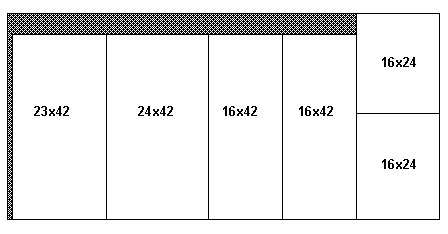
-Building Directions-
Add about 8 inches of moistened bedding to the bottom of one side of the bin. Put in the worms. Leave the lid off for a while and the worms will work down into the bedding away from the light.
adding your wastes.
Dig a small hole in the bedding and add your vegetable and fruit scraps. Cover the hole with bedding. Small amounts of meat can be added in the same way. Do not add anything inorganic or potentially hazardous material such as chemicals, glass, metal, or plastic.
maintaining your compost pile.
Keep your pile moist, but not wet. If flies are a problem, place more bedding material over the wastes. Every three to six months, move the compost to one side of the bin and add new bedding to the empty side. At this time, add food wastes to the new bedding only. Within one month, the worms will crawl over to the new bedding and the finished compost on the old side can be harvested. Then add new bedding to the old side.
For more information, please see The Worm Woman's Web Site by Mary Appelhof.